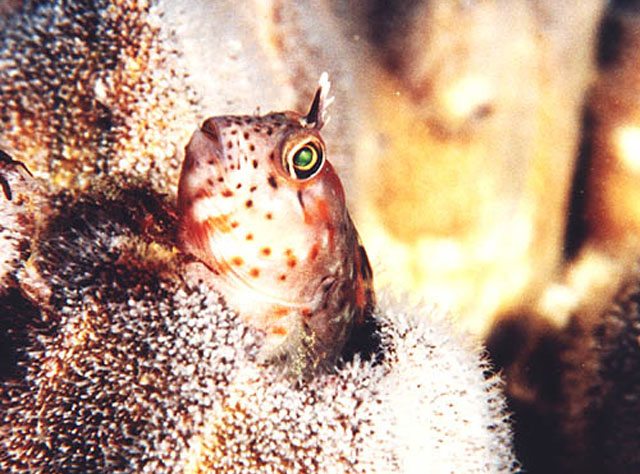| Blenniidae (Combtooth blennies), subfamily: Salariinae |
| 19 cm TL (male/unsexed) |
|
demersal; marine; depth range - 20 m |
| Southeast Pacific: Chile. |
|
Dorsal spines (total): 12-12; Dorsal soft rays (total): 16-18; Anal spines: 2-2; Anal soft rays: 18-20 |
| Adults occur in rocky areas. Oviparous. Eggs are demersal and adhesive (Ref. 205), and are attached to the substrate via a filamentous, adhesive pad or pedestal (Ref. 94114). Larvae are planktonic, often found in shallow, coastal waters (Ref. 94114). |
|
Least Concern (LC); Date assessed: 28 March 2009 Ref. (130435)
|
| harmless |
Source and more info: www.fishbase.org. For personal, classroom, and other internal use only. Not for publication.
